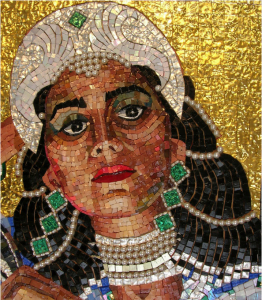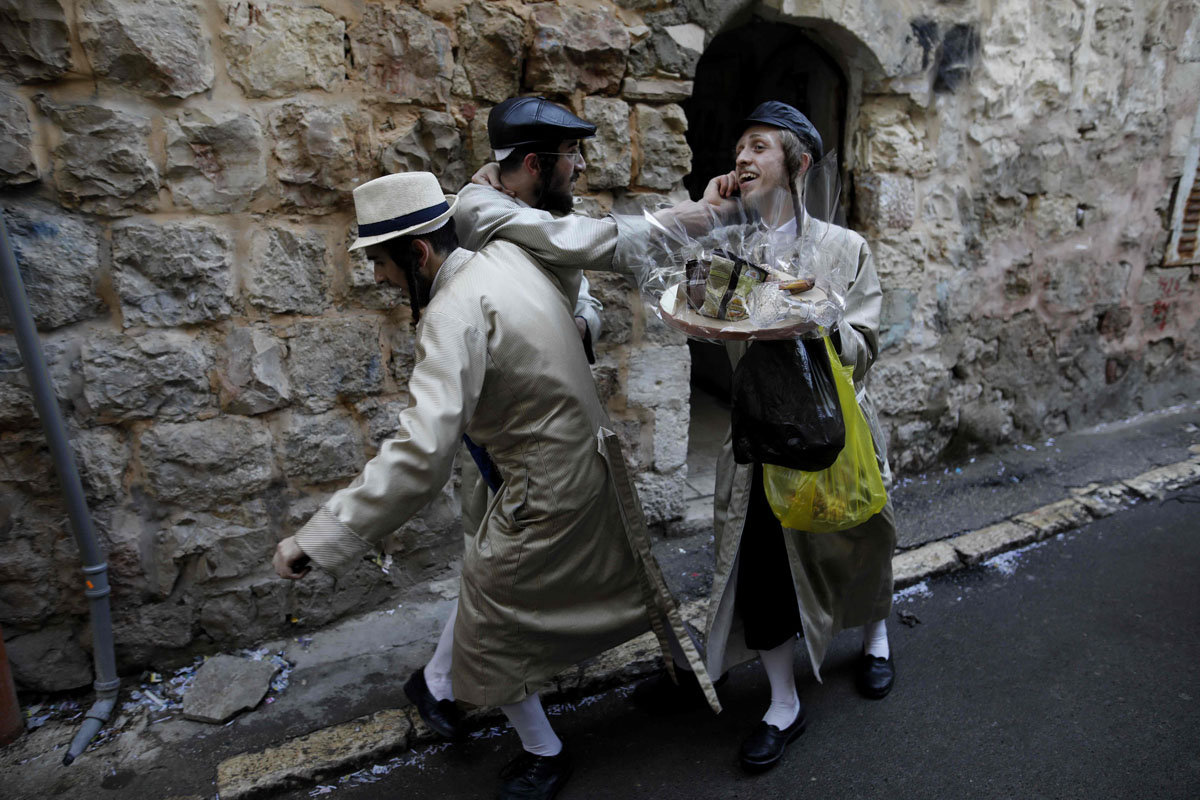
The Hidden and The Revealed: The Queen Esther Mosaics of Lilian Broca
It is a Jeopardy answer, for sure. The question is which book of the bible doesn't mention God, not even once? The answer is Esther, one of two books of the bible with a woman's name as the title. If you give the next Jeopardy question correctly as Ruth, for the other, you've done well. Jews celebrate Purim each year each because their people were delivered from annihilation by Esther. It is a very celebratory festival and one of the most interesting commandments related to Purim has to do with drinking. According to Jewish law, adults of drinking age are supposed to get so drunk that they can't tell the difference between Mordecai (a hero in the Purim story) and Haman (the villain). Not everyone does get drunk, but even in Ultra-Orthodox communities some men get sloshed on Purim. In one congregation I served we had a fun Purim service led by the children where adults were invited to boo or cheer throughout the telling of the story, depending on whether references were to the heroes or villains.

Until the other day it had never occurred to me that the story of Esther has the dark undertones of human trafficking and is not simply kids' play. In a thoughtful Sojourner's piece by Leslie Cox. I'll let you read the entire article if you choose, https://sojo.net/articles/esther-s-story-victim-s-account-human-trafficking
but this is a portion of how she reflects on Esther:
We forget the darkness woven throughout her testimony and we exploit her story without honestly accounting for her victimization and trials. Esther is a victim’s account of human trafficking.The United Nations defines human trafficking as “the recruitment, transportation, transfer, harboring or receipt of persons, by means of the threat or use of force or other forms of coercion, of abduction, of fraud, of deception, of the abuse of power … for the purpose of exploitation.”...
It is these first two chapters of Esther’s life that speak to the estimated 20.9 million trafficked victims in our world. The United Nations hypothesized that one of the reasons we often miss victims of human trafficking is because we don’t understand the many diverse faces of human trafficking victims. Some of these faces are in our Scriptures, our sacred texts. We have, in our Bible, stories that can teach us how to spot human trafficking, and the danger victims are placed in through the coercion and exploitation of people in power. It is important that we open our eyes to the humanity in our sacred texts. For our modern-day Esthers, there is a story within our holy text that speaks of similar trauma, exploitation, and trials. Most importantly within our Scripture we find our call: Let there be no more Esthers.
There is a happy ending to the biblical story, but Cox raises some important points. In the church we just don't deal well with some of these darker issues of our society. When Ruth was a counselor at a women's shelter we would participate in the annual Take Back the Night walk through our community. I would always remind the congregation I served that it was taking place, but very few people would show up. There was always someone from the RCMP who would address human trafficking before we walked, with a reminder that the issue wasn't "out there" somewhere. In the same way we don't like to think of domestic violence within our church families, we are uncomfortable with the thought of human trafficking in our communities. Yet Ruth has also been aware of this through her current work at the Belleville courthouse.
So, thanks to Leslie Cox for inviting us to consider an ancient story which may not resonate with many of us in a new and important light.
Thoughts?
No comments:
Post a Comment